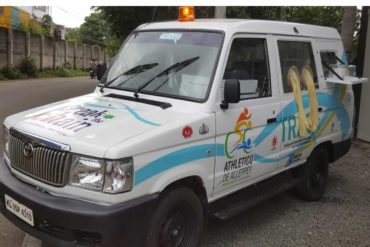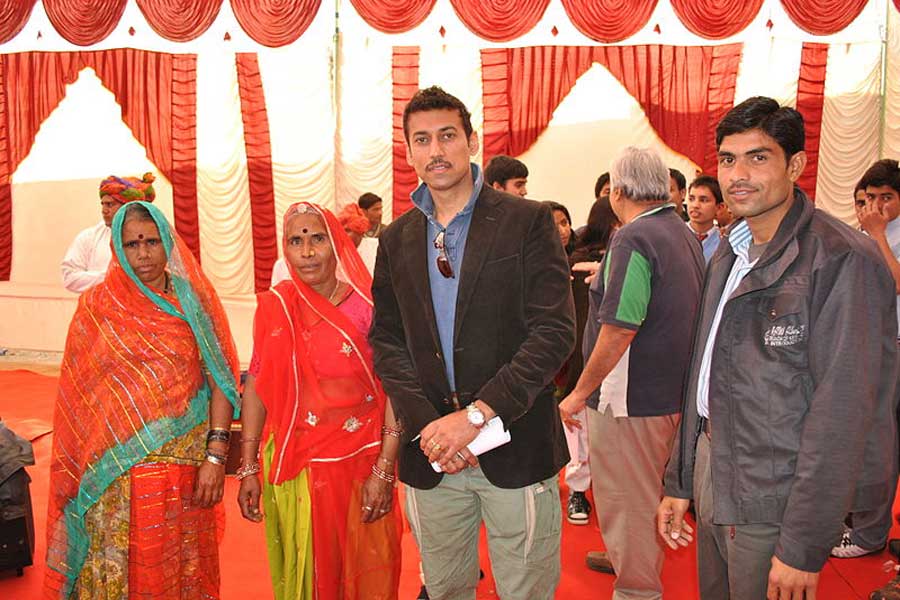When I joined the ART centre in Palakkad early this year, one of the first things Dr Lekha Sukumaran, our Senior Medical Officer, told me was how frustrating it was to see the Government trying to tackle the AIDS menace with umpteen number of ads, encouraging people to get themselves tested for HIV, with little or no information regarding ART (Anti-Retroviral therapy) centres. That is a sub-optimal use of such a valuable resource.
ART centres provide valuable service and word really needs to get out there—that being diagnosed with HIV is not the end of the road, that there is life after testing positive for HIV. ART centres all over India offer free medicines, free diagnostics and a lot more to People living with HIV/AIDS (PLHIV). Integrated counseling and testing centres counsel, test and refer patients to the ART centre when they test positive, but those who test in a private lab may not be aware of these resources.
Anju has been married for 5 years now. Her husband was diagnosed when he was screened after being found to have TB. It is routine procedure now to test for TB if found positive for HIV and vice versa. She has tested negative for HIV at the Voluntary counseling and testing centre affiliated to the District Hospital and the relief we feel is shared. One family member with the disease is easier to treat than two. She has been advised to test once again after three months and to use a condom during intercourse. As ART centres also provide anti-TB treatment through a single window approach, his treatment will be much simpler.
Pratibha and Rajiv are not that lucky. They have both tested positive and so has their younger child. They have registered and undergo counseling. The medicines that will be prescribed are what are called Anti-Retroviral therapy (ART), hence the name. The ART centre comprises of a team of doctors, counselors, nurses, a pharmacist, a technician, a data manager and a care coordinator.
Counseling is one of the most important parts of the services offered by the centre. It helps in ensuring adherence to ART therapy—an indication of how well the patient adheres to the prescribed regimen. Good adherence can ensure low viral load and a respectable CD4 count. Viral load is a measure of the viral burden in the body. CD4 count is a measure of the CD4 cells—white blood cells that fight infection. The higher the CD4 count the better.
Pratibha and Rajiv are among the more than 12 Lakh PLHIV (people living with HIV/ AIDS) who are going to benefit from ART centres that number about 541 as of 2018 in the country. The National AIDS Control Program under Ministry of Health and Family Welfare, GOI, launched the free Anti-Retroviral Therapy initiative on 1st April 2004. Since then, there has been no looking back.
ART centres have improved the outcome for the patients by providing not just free medicines, but free blood tests including the CD4 count and the viral load test, both of which would otherwise be very expensive. Counseling has helped limit the spread and prevent transmission to others. Peer group Vihaan offers hope and much-needed support. Prevention of Parent to Child Transmission (PPTCT) is another important goal that the ART centre focuses on.
According to NACO figures, we have been able to achieve 80 per cent reduction in estimated incidences of new infections since 1995 ( global decline is 47 per cent) and 71 per cent decline in AIDS related deaths since 2005 (global average 51per cent). India is signatory to UN strategy of 90:90:90 by 2020 which aims at ending AIDS as a public health threat by 2030 by achieving the following goals:
90 per cent of estimated PLHIV know their status.
90 per cent PLHIV are on ART
90 per cent PLHIV have viral suppression
Dr Ajithkumar K, Additional Professor, Department of Dermatology, GMC, Thrissur, who has been active in the field of HIV Medicine in Kerala, spoke to me about some of his concerns. According to him, “the HIV program is one of the most successful national programs India ever had, and it resulted in reduced incidence. Currently, the shift from comprehensive prevention strategy to ‘test and treat’ strategy internationally, with a medicalised approach over eradication, worsened by the absence of a vaccine, is going to challenge the painstakingly achieved milestones.
Moreover, in developing countries, the HIV response was initially funded externally. As a result of policy shift and decreased international fund availability, now it is almost entirely internally funded. This can lead to a strain on funding unless there is apolitical commitment specifically focusing on HIV.
With the availability of treatment facilities, less stigma and discrimination, there is a palpable reduction in HIV advocacy and activism. This can eventually affect the epidemic response on long term. Unfortunately, we have failed to translate the success of comprehensive HIV model to other diseases but instead we are trying to piggyback the existing health care system with HIV.”
Another challenge is that the stigma isn’t going anywhere anytime soon. The mindset needs to change and ART centres can make it happen. As we celebrate World AIDS day this year, let us hope for a more inclusive society where a person can come out as positive, without the fear of discrimination, not only to their own family but also to society.







